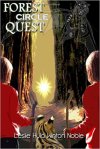I have always believed that a writer’s own assessment of the quality of his/her work is the most important aspect. If you, yourself, don’t enjoy what you have written, how on earth is it possible that others will?
This is where, when publishers or editors want to impose changes, I feel one should always be able to resist them if the result will no longer be what you were aiming at or feel happy with. Many an author of an outstanding book has allowed it to be reduced to pedestrian by ‘the system’ in order to get published, just as Hollywood has trashed so many good stories in their blockbuster versions. It took the latter a long time to learn that the best way to go is to keep as closely to the original as the different medium will possibly allow – as was done with the Tolkien and Rowlings books, for example.
So, assuming one has corrected all clumsiness of language and you have the final proof to read, it is important that you should get carried into the flow of it, for if you don’t, then how can you expect other readers to? One might theorise that if you are completely enjoying the story you have written, then all logic suggests that there are sufficient people with your own tastes to make it certain that others will, too.
There is one pitfall here which needs to be guarded against, however. Most, or probably all, writers will have developed vivid pictures in their minds of the scenes they have created. These pictures are there waiting to be recalled, and will pop out as soon as one reads each relevant passage. Perhaps, though, the actual wording doesn’t give anywhere near as clear a picture as the one you have in your mind, and therefore no reader is going to have as full an experience from the book as the one you yourself receive each time you read it.
One way to guard against this is, when reading final versions, deliberately to suppress the previous pictures in your mind and insist that the printed page recreate them for you. This is harder to do than it may seem, and takes good self-discipline. One knows one is doing it correctly, though, when one comes to the end of a descriptive passage and discovers that important bits of the desired picture are missing.
With cover and other illustrations, one also needs to be conscious of whether they augment and reinforce, or distort and confuse, what the written words are trying to portray. I often find that when I come to a part of a book that has been chosen as inspiration for the cover design, there are some quite unnecessary anomalies, which truly irritate me. There, either the author should have adjusted the descriptions/action to fit (as I elected to do in respect of one of my books rather than change the cover) or the illustrations need to be amended.

















Excellent advice, Col.
LikeLike
Glad you find it so!
LikeLike
Good lesson Col, thanks.
LikeLike
Probably has elements of teaching grandmothers to suck eggs? Still, some may have missed seeing these pitfalls.
LikeLike